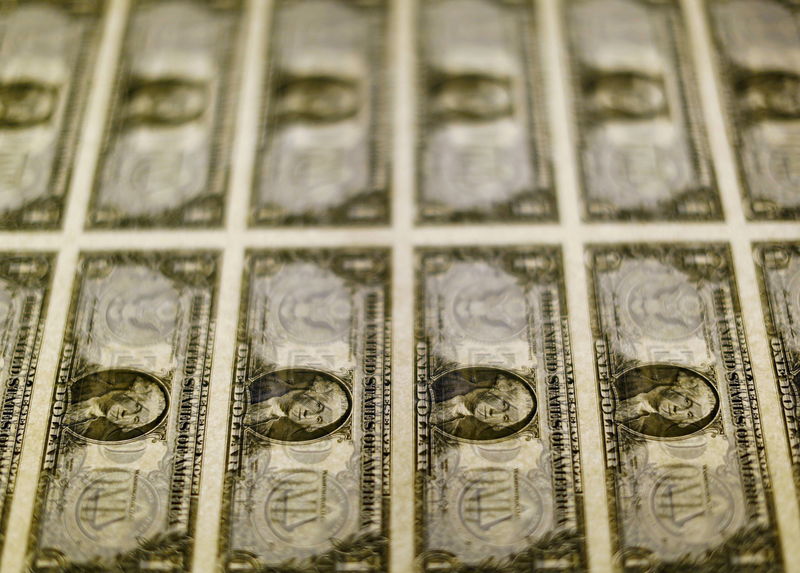Trump announces 100% chip tariff as Apple ups U.S. investment
Investing.com - The U.S. dollar edged marginally higher Wednesday, helped by upbeat economic data, but gains are limited as uncertainty over trade policies and deficit worries remain.
At 06:45 ET (10:45 GMT), the Dollar Index, which tracks the greenback against a basket of six other currencies, gained 0.1% to 99.500, but remained 8% lower this year to date as investors look for alternatives to U.S. assets.
Dollar helped by rising consumer confidence
The dollar received a boost on Tuesday after the release of data showing U.S. consumer confidence in May was much better than expected.
However, new orders for durable goods also plunged by the most in six months in April as the flip-flopping tariff salvos take a toll on the economy and businesses.
Markets have also been sensitive to the deteriorating U.S. debt profile, exacerbated by Moody’s downgrade of the U.S. sovereign credit rating on May 16.
“A more conciliatory tone from President Trump towards the EU, coupled with reports of pressure from some EU leaders for a quick trade deal, also contributed to the squeeze in USD shorts,” said analysts at ING, in a note.
Traders will keep an eye on the minutes from the May Fed meeting, due later in the session, for clues of future monetary policy amid a period of economic uncertainty.
Federal Reserve Bank of Minneapolis President Neel Kashkari on Tuesday called for keeping interest rates steady until there is more clarity on how higher tariffs affect inflation, warning against "looking through" the impact of such supply price shocks.
“Markets will be looking for clues on where the Fed stands regarding the transitory nature of tariff-driven inflation,” ING added.
Euro edges higher
In Europe, EUR/USD traded 0.1% higher to 1.1334, with the single currency stabilizing after dropping 0.5% on Tuesday.
Data released earlier Wednesday showed that France’s economy grew slightly in the first quarter, with the final data from statistics office INSEE confirming the preliminary reading of 0.1%.
Additionally, the number of people out of work in Germany rose at a faster pace than expected in May, approaching the 3 million mark for the first time over the last 10 years.
The European Central Bank is scheduled to meet on June 5, with financial markets expecting that it would lower its key deposit facility rate to 2.00% from 2.25% - which would be the ECB’s eighth rate cut in a row.
“EUR/USD has found support around 1.130 on several occasions over the past six weeks,” ING added. “If U.S. data and Trump continue to deliver positive surprises this week, a decisive break lower is possible. Still, we doubt markets are ready to price out the USD risk premium, especially with deficit concerns recently coming to the fore.”
GBP/USD rose 0.1% to 1.3516, after data showed that British grocery price inflation jumped to 4.1% for the four weeks to May 18, its highest level since February last year.
Yen gains slightly
In Asia, USD/JPY traded 0.1% lower to 144.15, with Japan’s yen steady after dropping 1% on Tuesday following a report by Reuters that Japan will consider trimming issuance of super-long bonds after a sharp rise in yields in recent weeks.
USD/CNY traded 0.1% lower to 7.1912, in muted trading as uncertainty surrounding Trump’s trade policies kept investors cautious.
NZD/USD gained 0.3% to 0.5972, after the country’s central bank signalled it might be nearer to an end to easing as it cut rates by 25 bps as expected.
